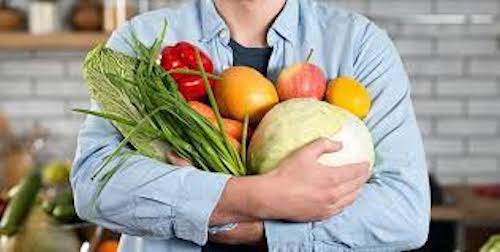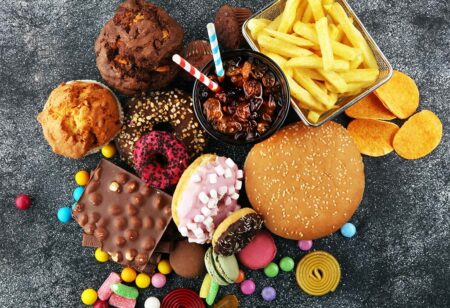
Recently, I was interviewed on Town Square with Ernie Manouse on Houston’s NPR station to discuss nutrition, COVID-19 and the state of America’s health. Here is a summary of our conversation.
Ernie: Why was US hit so hard by COVID-19? Was the unhealthy state of Americans a factor?
Catherine: We know that obesity is a risk factor for COVID-19. America has one of the highest rates of obesity, ranking #17 in the world with an average body mass index (BMI) of 28.8 in 2019. Not only are 39.6% of Americans obese but another 30.7% of American adults are overweight. A few of the issues which contribute to the high number of obese and overweight individuals in America include more people with a sedentary lifestyle, people who lead busy lives and the easy access of unhealthy and calorie-laden fast-foods. Our high percentage of overweight and obese individuals is one contributor to why the United States was hit so hard with COVID-19. Also, overweight and obese individuals tend to have more underlying health conditions which also increases their risk of severe side effects due to the virus.
Ernie: Do we have high rates of obesity, chronic disease & other medical conditions?
Catherine: Yes, and people who are obese, compared to those with a normal or healthy weight, are at increased risk for many serious diseases and health conditions. This includes the leading causes of death in America: heart disease, cancer, stroke and diabetes.

Ernie: How do we treat illness verses how we approach wellness?
Catherine: In America we tend to focus more on treating the illness versus preventing it. We live in a fast-paced society which leads us to consume unhealthy food on the go and more processed food. We also tend to choose medication to bring down blood pressure, blood glucose and cholesterol instead of lifestyle change. Eating more fruits and vegetables, whole grains, lean meats and low-fat dairy products can do wonders for these numbers by increasing fiber intake, antioxidant intake, and nutrients such as magnesium, calcium and potassium. It also lowers fat and sugar intake. These behavior changes are known to lower cholesterol, blood pressure and blood sugar as well as body weight.
Ernie: Are we eating more processed foods versus whole foods?
Catherine: Yes, we are. From fast food to chips, granola bars, and cookies American’s diets are full of it. These foods are quick to grab while we are running from one commitment to another. However, an apple and a piece of cheese (whole food) is just as fast. Processed food can be very addicting so we tend grab chips or Oreos over fruit and nuts.

Ernie: How do you recommend that we eat a balanced diet?
Catherine: There are a few key things that you can do daily to improve your nutrition. I recommend making small, attainable goals for long term success.
- Eat more whole foods, as mentioned above. Primarily shop the perimeter of the grocery store and run up and down a few aisles to pick up foods to compliment your whole foods.
- Increase your water intake to half of your body weight in ounces of hydrating fluids per day. Most Americans are mildly to moderately dehydrated. Water is used in every cell in your body and increases your energy level.
- Eat every 3-4 hours. Eat a meal or snack that combines a protein and a carbohydrate every few hours to keep your energy level and metabolism up. Eat 75% of your calories during the day when you are most active and aim for an early and light dinner.
- Pay attention to portion sizes. American restaurants have definitely super-sized! They contain 2-3 times the amount of food that we need per meal. This deceives us into thinking this is the appropriate portion size for our bodies. Some good frame of references include: your protein portion should be the size of the palm of your hand (not including your fingers) and your starch portion should be the size of your fist. Vegetable servings are unlimited. Aiming to fill half of your plate with vegetables and the other two quarters with lean meat and starch is a great way to stay in check.
- Eat balanced meals and snacks. This means that you should include a protein source: lean meat, nuts, soy or dairy with a carbohydrate: whole grain, fruit or vegetable at each meal. Our goal is to eat 7-10 servings of fruits and vegetables, 6 oz of lean meat, and 2-3 servings of low-fat dairy products per day. Grain servings vary depending on your age, goals and activity.
- Move daily. We are a sedentary society. If you do not feel you are ready for a regular exercise schedule, aim to move more. Use an app or device such as a Fit Bit to count your daily steps, slowly increasing them to 10,000 per day. Another program I like is called 99 walks.com. You are rewarded when you hit your monthly mile goal. The goal for Americans is to exercise 150-200 minutes per week. Start slow and figure out the best way for you to get there.
The average American has become more sedentary and gained 24-29 pounds over the last year during COVID-19. This is a great time NOW to get yourself back in shape or into the best shape of your life using the tips above.